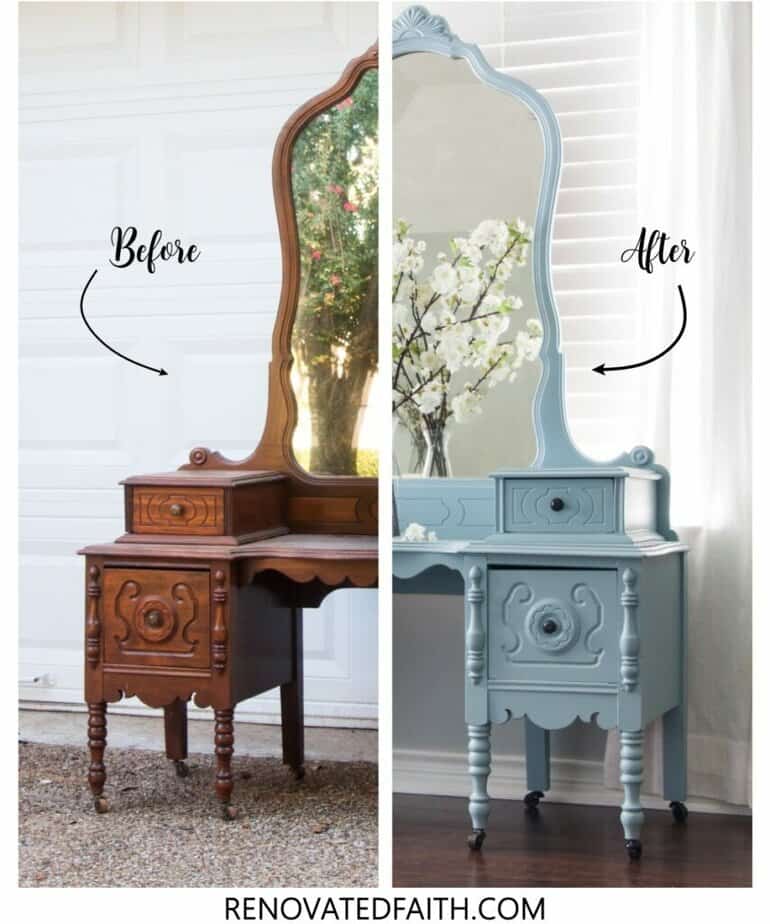Bgroho Insights
Your daily source for news, tips, and inspiration.
Revive Your Relics: Transforming Old Furniture into Timeless Treasures
Unearth the magic of old furniture! Discover expert tips to transform your relics into beautiful, timeless treasures that tell your story.
5 Easy Steps to Restore and Revive Your Vintage Furniture
Reviving and restoring vintage furniture can be a rewarding project that not only breathes new life into antique pieces but also enhances the aesthetic appeal of your space. Follow these 5 easy steps to ensure you successfully restore and revive your vintage treasures. First, assess the condition of your furniture. Look for any damages, such as scratches, dents, or water stains, and make a note of what needs repairing. This initial evaluation will help you determine the extent of work required and guide you in your restoration process.
Next, clean the furniture thoroughly. Use a gentle cleaning solution to remove dust, dirt, and grime, ensuring not to damage the surface. Once it's clean, consider repairing any imperfections. This might involve filling in cracks or replacing broken hardware. Lastly, apply a suitable finish to enhance the wood's natural beauty and protect it from future damage. Remember, with patience and care, you can restore and revive your vintage furniture beautifully!

Transforming Family Heirlooms: DIY Techniques for Timeless Treasures
Transforming family heirlooms can be a deeply satisfying project that not only preserves cherished memories but also infuses them with a fresh, modern touch. Whether it's a vintage tea set, an old quilt, or a beloved piece of furniture, these treasures can benefit from DIY techniques that enhance their beauty while maintaining their sentimental value. Start by evaluating the condition of your heirloom and considering methods such as upcycling or restorative painting. For instance, an antique chest can be revitalized with a coat of chic, contemporary paint or by applying new hardware that complements its original design.
Another effective way to transform family heirlooms is through creative repurposing. This approach involves taking a beloved item and giving it a new function, ensuring that it continues to hold meaning in your home. Here are a few ideas to get you started:
- Turn an old tablecloth into decorative throw pillows to keep the memories alive in a modern context.
- Repurpose framed photographs into a collage that celebrates family history in your living room.
- Use an inherited jewelry box as a storage solution for everyday items, merging practicality with nostalgia.
What Are the Best Techniques for Upcycling Old Furniture?
Upcycling old furniture is a creative and sustainable way to give a new lease of life to items that might otherwise end up in a landfill. Techniques for upcycling can vary widely, depending on the materials used and the desired aesthetic. One popular method involves painting the furniture with bold colors or patterns to rejuvenate its appearance. Additionally, distressing techniques, such as sanding or using antiquing solutions, can create a charming vintage look. If you're feeling crafty, consider reupholstering chairs or sofas with vibrant fabrics or mixed textiles, which can instantly elevate their appeal.
Another effective technique is decoupage, where paper or fabric is applied to the surface of the furniture using a special adhesive. This can be a fun way to add personalized designs or even meaningful quotes. Incorporating functional upgrades is also a great approach; for instance, transforming an old dresser into a stylish bathroom vanity, or converting a worn-out ladder into a unique bookshelf. By exploring these best techniques for upcycling old furniture, not only do you reduce waste, but you also create stunning pieces that reflect your personal style.